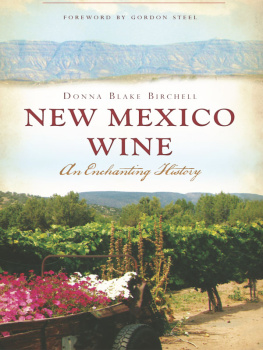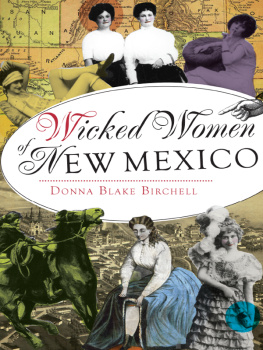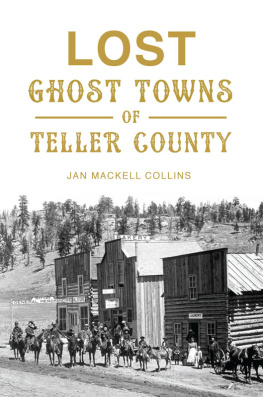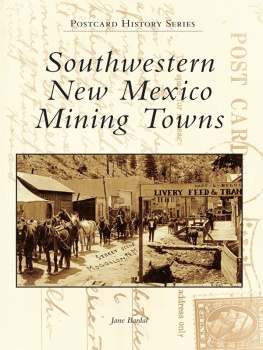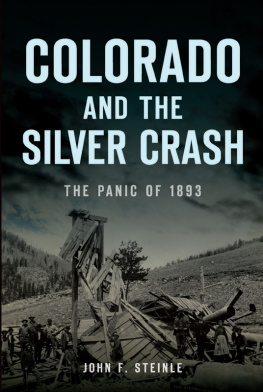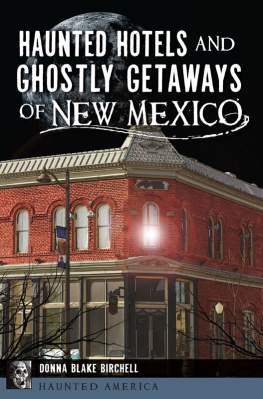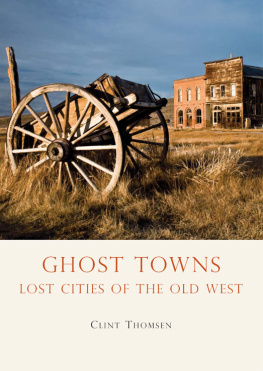


Published by The History Press
Charleston, SC
www.historypress.com
Copyright 2022 by Donna Blake Birchell
All rights reserved
All images are courtesy of the author unless otherwise indicated.
First published 2022
E-Book edition 2022
ISBN 978.1.4396.7444.4
Library of Congress Control Number: 2021950575
Print Edition ISBN 978.1.4671.4826.9
Notice: The information in this book is true and complete to the best of our knowledge. It is offered without guarantee on the part of the author or The History Press. The author and The History Press disclaim all liability in connection with the use of this book.
All rights reserved. No part of this book may be reproduced or transmitted in any form whatsoever without prior written permission from the publisher except in the case of brief quotations embodied in critical articles and reviews.
For all those who pioneered a wild, strange land to establish an enhanced way of life for others and bettered themselves along the same route.

There is a deep sense in which we are all ghost towns. We are all haunted by the memory of those we love, those with whom we feel we have unfinished business. While they may no longer be with us, a faint aroma of their presence remains, a presence that haunts us until we make our peace with them and let them go.
Peter Rollins
CONTENTS
ACKNOWLEDGEMENTS
As always, many thanks go to Samantha Villa, who believed in me more than I did myself. I will truly always be grateful, my sweet friend.
It goes without saying that without the great outpouring of love and encouragement from my wonderful family, Jerry, Michael, and Justin, I would not be able to continue this long journey. You are all the best, and I could not have done this without your support. Sending you much love and a huge thank-you from the bottom of my heart.
Many thanks to my dear friends Richard and Carol Estes for your encouragement and excitement. I think you are more excited about the books than I am!
Amy McVay Tellez and John LeMay of the Historical Museum of Roswell, you both hold a special place in my heart for the many blessings of friendship you have brought into my life! I am not worthy!
To my editor, Ben Gibson, thank you for the gentle guidance and freedom to create. To all the unsung heroes at Arcadia Publishing who work diligently to produce the best books possibleI am truly indebted to you.
I owe a huge debt of gratitude to all of you, who take time out of your lives to read my humble words. Your support and encouragement mean so muchthank you isnt enough!
INTRODUCTION
New Mexico is a wild, open land full of varied landscapes and diverse cultures. The Native cultures were the first to cultivate this terrain, adding their own special touches to the stunning backdrop. When the Spaniards arrived in 1598 to settle, they also changed the complexion of New Mexico with their architectural style and religious beliefs. But it was most likely the Anglo population, who came west to homestead and find their fortunes in gold, who changed the entire aspect of the New Mexico Territory for the Indigenous people. The Native tribes were pushed aside, their lands confiscated and their way of life eradicated, all in the name of progress. Although these events happened over two to four hundred years ago, the scars are still painful for Native communities.
Brave souls from the eastern part of the United States ventured into the unknown to cash inquite literally, in many caseson the seemingly limitless opportunities before them in the western territories. The lure of the precious metals available made many rich beyond their wildest imagination and others broken irreparably. The West was hard on those who were not prepared for the lessons it would teach. It was also a haven for outlaws, con men, shady ladieseach with a plan to separate the prospectors from their gold. The West was treacherous to say the least.
What constitutes a ghost town? According to sources, a true ghost town is a completely abandoned settlement. This book will feature many little-known towns that are no more than a foundation, as well as those still inhabited by a limited population. Although the word ghost implies that a place is haunted, only a select few have gained this reputationmany for good reason. We ask when you visit a town with a population that you be as unintrusive as possible, for this is their home.
FROZEN IN TIME
Remnants of over four hundred of these settlements can be found in nearly every part of New Mexico, especially along the Rio Grande Corridor, where mining was most prevalent. Often, only ruins remain of what were once bustling communities, full of life. If the adobe and wooden walls left in these towns could speak, we would most likely hear a raucous tale to make us blush. The fact these structures, many built from the delicate material of adobe, have stood the test of time for future generations to explore and ponder is amazing. Many times, the rate these towns grew was astonishing, so the construction was hasty and possibly less than sturdynot up to todays standards for sure.
We are grateful for the glimpses into the past that are frozen in time, showing us insight into the hard work and determination it took to forge a life in the woolly West. New Mexico is a stunningly gorgeous state with much to offer its visitors, but it can be less than forgiving to those who try to uncover its treasures. Weather changes often occur several times daily in the state. Droughts, torrential rains, wind and heavy snows plagued the settlers. They were truly the epitome of the old saying what doesnt kill you makes you stronger.
How do once-thriving communities become ghost towns? As you travel to the small settlements you read about here, you will notice it looks like some of the townspeople just vanished or picked up and moved in an extreme hurry. Pans were left on the stove, dishes were left with food on the tables, childrens toys were discarded in haste. One of the reasons for this in New Mexico was a diphtheria epidemic, outbreaks of which were reported in rural parts of the state from 1910 to 1915. Influenza also ravaged the state in 1918both were mostly uncontrolled and caused many deaths, especially in children, which also resulted in small towns being nearly wiped out. The lonely cemeteries you still can visit are filled with these victims.
The railroad was the other factor that made towns either boom or bust. As towns were bypassed by the steel rails, there was no other way for the residents to get their goods to market without traveling by wagon for days at a time. Often, the items were spoiled and unusable by the time they reached the railyards. Being passed by the railroad was the kiss of death for these once-prosperous towns.
GOLD RUSHES
Everyone is aware of the gold rush in California in 1849, which saw throngs of prospectors, family men and tender feet rush to the Golden State to make their fortunes, but few know that New Mexico also had a gold rush of its own. In fact, the first gold rush west of the Mississippi River occurred in the New Mexico Territory in 1820, when the shiny yellow metal was discovered in the San Pedro Mountains, east of Golden. Gold mines in the state were both placer and lode mines, producing millions of dollars in revenue during their tenure. According to author Virginia T. McLemore, between the years of 1848 to 2000, more than 3.2 million ounces of gold and 117 million ounces of silver have been produced in New Mexico.
Next page

